第164章
The white Uakari (Brachyurus calvus), seems to be found in no other part of America than the district just mentioned, namely, the banks of the Japura, near its principal mouth; and even there it is confined, as far I could learn, to the western side of the river.It lives in small troops among the crowns of the lofty trees, subsisting on fruits of various kinds.Hunters say it is pretty nimble in its motions, but is not much given to leaping, preferring to run up and down the larger boughs in travelling from tree to tree.The mother, as in other species of the monkey order, carries her young on her back.Individuals are obtained alive by shooting them with the blow-pipe and arrows tipped with diluted Urari poison.They run a considerable distance after being pierced, and it requires an experienced hunter to track them.He is considered the most expert who can keep pace with a wounded one, and catch it in his arms when it falls exhausted.Apinch of salt, the antidote to the poison, is then put in its mouth, and the creature revives.The species is rare, even in the limited district which it inhabits.Senor Chrysostomo sent six of his most skillful Indians, who were absent three weeks before they obtained the twelve specimens which formed his unique and princely gift.When an independent hunter obtains one, a very high price (thirty to forty milreis) [Three pounds seven shillings to four pounds thirteen shillings] is asked, these monkeys being in great demand for presents to persons of influence down the river.
Adult Uakaris, caught in the way just described, very rarely become tame.They are peevish and sulky, resisting all attempts to coax them, and biting anyone who ventures within reach.They have no particular cry, even when in their native woods; in captivity they are quite silent.In the course of a few days or weeks, if not very carefully attended to, they fall into a listless condition, refuse food, and die.Many of them succumb to a disease which I suppose from the symptoms to be inflammation of the chest or lungs.The one which I kept as a pet died of this disorder after I had had it about three weeks.It lost its appetite in a very few days, although kept in an airy verandah;its coat, which was originally long, smooth, and glossy, became dingy and ragged like that of the specimens seen in museums, and the bright scarlet colour of its face changed to a duller hue.
This colour, in health, is spread over the features up to the roots of the hair on the forehead and temples, and down to the neck, including the flabby cheeks which hang down below the jaws.
The animal, in this condition, looks at a short distance as though some one had laid a thick coat of red paint on its countenance.The death of my pet was slow; during the last twenty-four hours it lay prostrate, breathing quickly, its chest strongly heaving; the colour of its face became gradually paler, but was still red when it expired.As the hue did not quite disappear until two or three hours after the animal was quite dead, I judged that it was not exclusively due to the blood, but partly to a pigment beneath the skin which would probably retain its colour a short time after the circulation had ceased.
After seeing much of the morose disposition of the Uakari, I was not a little surprised one day at a friend's house to find an extremely lively and familiar individual of this species.It ran from an inner chamber straight towards me after I had sat down on a chair, climbed my legs and nestled in my lap, turning round and looking up with the usual monkey's grin, after it had made itself comfortable.It was a young animal which had been taken when its mother was shot with a poisoned arrow; its teeth were incomplete, and the face was pale and mottled, the glowing scarlet hue not supervening in these animals before mature age; it had also a few long black hairs on the eyebrows and lips.The frisky little fellow had been reared in the house amongst the children, and allowed to run about freely, and take its meals with the rest of the household.There are few animals which the Brazilians of these villages have not succeeded in taming.I have even seen young jaguars running loose about a house, and treated as pets.
The animals that I had rarely became familiar, however long they might remain in my possession, a circumstance due no doubt to their being kept always tied up.
The Uakari is one of the many species of animals which are classified by the Brazilians as "mortal," or of delicate constitution, in contradistinction to those which are "duro," or hardy.A large proportion of the specimens sent from Ega die before arriving at Para, and scarcely one in a dozen succeeds in reaching Rip Janeiro alive.The difficulty it has of accommodating itself to changed conditions probably has some connection with the very limited range or confined sphere of life of the species in its natural state, its native home being an area of swampy woods, not more than about sixty square miles in extent, although no permanent barrier exists to cheek its dispersal, except towards the south, over a much wider space.